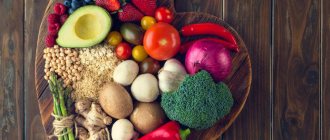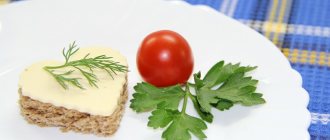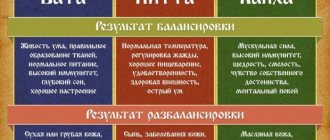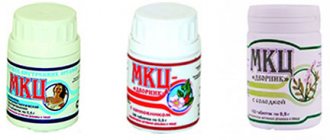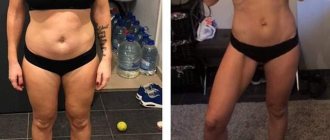Diets
Sergey Sidoruk 03/31/2019 no comments
1
Diet for those involved in fitness
2.9 (58.39%) 186 votes
The main reason for progress in fitness is proper, balanced nutrition. Sleep comes in second place, and physical activity comes only in third place, so you need to approach this issue with the greatest responsibility.
Features of fitness nutrition
Content
Exercise and a healthy diet are the key to a fit figure and a good mood. And if all this happens on a regular basis, then the result will get better and better every day. It’s not as scary to miss a workout because you feel unwell as emptying the refrigerator at night. We will consider the main principles of fitness nutrition for men and women below.
For men
Men need one and a half to two times more calories per day than women. If a man is involved in fitness and strives to adhere to a healthy diet, he will have to follow the basic rules of calorie intake per day. The diet should consist of 30-40 percent protein. Of course, each body has its own characteristics, but to maintain muscle mass and increase it, half of the food per day should consist of proteins and carbohydrates.
The key to a toned figure is exercise and healthy eating.
For women
In the female body, metabolism is slowed down by about 15 percent due to less voluminous muscle mass. Therefore, when drawing up a fitness diet for weight loss for women, it is worth paying attention, in addition to proteins, fats and carbohydrates, to vitamins and minerals. Adding them to your diet has a beneficial effect on maintaining the condition of hair, nails and skin. When creating a fitness diet, you need to take into account all the intricacies of the female body.
What to eat after training?
After a workout, it is best to eat something light, something that is absorbed faster .
The ideal option would be a protein shake. If you exercise in the morning or afternoon, it can be carbohydrates and protein, regardless of whether you are losing or gaining weight. And if you train in the evening and your goal is to get rid of the sides hanging down to the floor , then don’t even think about carbohydrates, only protein, maximum carbohydrates from vegetables, that is, fiber. If you are gaining weight, then you can treat yourself to carbohydrates, but not much.
Products in the fitness menu
We have sorted out the priorities and differences in the bodies of men and women. It remains to determine which products are suitable for a fitness diet for burning fat, and which will interfere with the active process of losing weight.
Squirrels
Proteins are compounds that are the main “builder” of our body. For a person involved in fitness, the daily protein requirement is calculated according to the following principle: 1.5 g per 1 kg of body weight. But you shouldn’t consume more than 30 g per meal (most likely, protein beyond this norm will simply not be absorbed).
Sample menu for the week
An example of a balanced diet for a week, taking into account meals before and after fitness. Meals are divided into 5 meals, taking into account the daily calorie intake.
1 day:
- 2 eggs, a glass of juice, oatmeal and cottage cheese;
- fruit salad;
- cucumber and tomato salad, boiled turkey with rice;
- kefir with bran bread;
- vegetable salad, fish or seafood.
Day 2:
- kefir with fruits;
- carrot and cabbage salad, meat;
- omelet, cabbage salad, vegetable broth soup;
- apple;
- salad with herbs and vegetables, oatmeal.
Day 3:
- banana, kefir, oatmeal;
- cottage cheese with fruit;
- boiled chicken breast with buckwheat;
- vegetable juice, apple;
- baked beef with vegetable salad.
For a balanced diet, meals are divided into 5 meals
Day 4:
- 2 eggs, oatmeal, banana;
- juice with bran bread;
- boiled beef with rice porridge;
- cottage cheese with fruit;
- chicken breast with vegetables.
Day 5:
- muesli with milk, apple;
- fruit salad;
- chicken meat with buckwheat, apple;
- low-fat yogurt with bread;
- baked fish with vegetables.
Day 6:
- buckwheat with milk, banana;
- cottage cheese with dried fruits;
- baked fish with rice and vegetables;
- kefir with bread;
- boiled seafood with vegetables.
Menu for a balanced diet
Day 7
- 2 eggs, oatmeal with fruit;
- cottage cheese with banana;
- chicken breast with rice, several tomatoes;
- yogurt, apple;
- beef with boiled corn.
Why does the diet depend on the nature of energy expenditure?
To understand this process, you should start from afar - with general energy costs, which mean:
- Basic metabolism, which ensures the normal functioning of all internal organs and systems of the body at rest . Here, the person’s age, gender, and body structure are taken into account. For example, in men the metabolic process is 10% faster than in women, and in people of retirement age it, on the contrary, decreases to 15%.
- Dynamic properties of food or the amount of energy that the body spends on digestion, depending on the food received. Protein foods maximize metabolism – up to 40%. Metabolism increases within 2 hours after eating and lasts for about 6 hours after. On average, the body spends 10% of total energy expenditure on digesting food.
- Metabolic processes of an additional nature are those that determine energy consumption depending on the level of physical activity . The value of these costs directly depends on the intensity of the training.
In accordance with the indicators of metabolic processes, a sports nutritionist develops a balanced diet that helps replenish costs for the benefit of the body.
Dish recipes
How to continue to eat deliciously, but without gaining extra pounds? Recipes for low-calorie dietary dishes that can easily be prepared at home will help in this matter.
First meal
Vegetable soup with celery
Ingredients:
- celery root – 1 pc.;
- white cabbage – 0.5 kg;
- onions – 300 g;
- tomatoes –0.5 kg;
- sweet pepper – 3 pcs.;
- green onions - 2-3 feathers;
- head of garlic;
- spices, herbs and olive oil - to taste.
Vegetable soup with celery
Fry the chopped onion until golden brown. Add grated carrots and celery. Add the cabbage and sweet pepper there and mix. Simmer for 10 minutes, add tomatoes and leave to simmer for a few more minutes.
Place the vegetables in a saucepan and pour boiling water over them, covering them completely with the water level. After boiling, stir and leave for another 10 minutes. Add herbs, garlic and spices to taste. Let's leave it to brew.
Lentil soup
Ingredients:
- vegetable broth – 1 l;
- onions – 1 pc.;
- carrots – 1 pc.;
- lentils – 200 g;
- 1 head of garlic;
- herbs and spices - to taste.
Chop onion, garlic, carrots and herbs. Bring the vegetable broth to a boil and lower the onions and carrots into it. We wait 10 minutes, then add the lentils and continue cooking until they are ready.
A few minutes before removing from heat, add spices, garlic and herbs to taste.
Lentil soup
Second courses
Chicken breast with funchose
Ingredients:
- chicken fillet – 200-300 g;
- carrots – 1 pc.;
- onion – 1 pc.;
- dried porcini mushrooms – 1-2 handfuls;
- funchose (glass noodles) – 150-200 g;
- sugar – 1 tsp;
- soy sauce – 5 tbsp. l.
Fry the onion with added sugar until transparent. We also send grated carrots and garlic there. Keep it on for a couple more minutes. Place chopped chicken breast. After 5-8 minutes, add mushrooms and soy sauce. Simmer for 5 minutes, then mix with funcheza, which we first soak in boiling water for 4-6 minutes. Stir and heat our dish.
Hake in a slow cooker
Ingredients:
- medium hake – 3 pcs.;
- carrots – 1 pc.;
- onion – 1 pc.;
- lemon - half;
- bay leaf, salt and spices - at your discretion.
Let's cut the hake into the required portions. Sprinkle with lemon juice and add salt and pepper to taste. Place the onion, chopped into rings, grated carrots and fish into the multicooker. Add water and cook in fish mode for 7-10 minutes.
Main courses for a fitness diet
Use of sports supplements in fitness
Taking sports nutrition is an addition to the main diet and in no case can replace a full meal. Supplements are not doping, steroids and do not harm the human body. An undoubted advantage of taking supplements is the replenishment of missing elements before, during and after fitness classes.
The only downside is their high cost.
Let’s take a closer look at what sports nutrition and supplements should be consumed when doing fitness.
Protein
Pure protein. Ideal to take before your morning run or during and immediately after exercise to satisfy hunger and fuel muscles. The protein is sold in powder form, which is easily diluted with water or milk.
BCAAs
The same protein, only split into elements. It differs from protein in that it contains only 3 amino acids, but the ones that most influence the growth of muscle mass and the maintenance of tissue condition. Also, these amino acids are essential and cannot be synthesized in the human body. BCAA's are available in capsule form.
Sports nutrition is a supplement to the main diet.
L-carnitine
Causes a fat burning effect due to the breakdown of fat tissue during cardio exercise. The most suitable type of sports supplement for fitness. L-carnitine is available in powder and capsule form.
Daily vitamins
They represent the entire list of vitamins and minerals necessary for humans. Recommended for all people, even those not involved in sports. Available in the form of compressed tablets.
Diet during training for weight loss for 12 weeks
How it works
This weight loss diet while working out in the gym is designed specifically for those who want to remove excess fat without losing valuable muscle tissue. Each phase of the program consists of three meals and 3 snacks. Every 4 weeks you will need to reduce the number of calories you consume without reducing the amount of protein in your diet. A week before the end of the plan, the amount of carbohydrates, sodium and liquid will change in order to end up with a beautiful and perfect body and give the muscles a little definition. Proper nutrition when playing sports is a decisive factor in achieving your goal and getting results.
Common Fitness Stereotypes
There are some stereotypes about fitness that can scare a person away from exercising. Let's look at the most common ones and try to destroy them!
It is inappropriate and dangerous for girls to exercise in the gym.
A large number of girls are sure that they have nothing to do in the gym, and training with free weights will turn them into muscle women. But this is not true at all. All modern gyms are equipped with equipment for pumping and improving lagging muscles. Ellipticals, step machines and treadmills are the perfect start and end to every workout.
There are some stereotypes about fitness for women
If you stop exercising, your muscles will turn into fat.
It's not like that at all. When you pause or stop exercising for various reasons, muscle mass may simply decrease in size, because the body does not need it without stress. And if there were extra pounds initially, they will not return on their own. It all depends on whether you follow your diet and sleep schedule outside of the training process or not.
Fitness takes too much time.
Another misconception. A well-designed fitness training plan lasts approximately 40-60 minutes and takes 10 minutes each to warm up and cool down. Therefore, you can always take an hour of time for your own beauty and health.
The concept of sports nutrition is not as obvious as it seems
There is hardly a single person who would deny the influence of food on the functions of internal organs and systems. By the way, people began to understand this long before our era: remember the famous phrase of the founder of world medicine “We are what we eat”?
A balanced diet, prepared individually, plays a leading role in achieving sports results. Even if you "modestly" train on a treadmill three times a week or practice walking in the park, the body is stressed and energy expenditure increases.
A fitness nutritionist helps you choose nutrition depending on your goals: gain muscle mass, lose weight, or exercise “for the soul” while maintaining normal health.
To replenish your energy reserves rationally (with a healthy component, and not in fat reserves), a nutritionist needs to:
- Choose a suitable complex of vitamins, amino acids, fiber, minerals and other bioactive elements that will work to achieve your goal.
- Create a list of the “right” products depending on the level of load (strength training, recovery or maximum performance directly during training/competition, etc.).
- Depending on the speed of metabolic processes, “prescribe” intensive food products and supplements that can influence metabolic activity.
The effectiveness of a sports diet with a competent approach does not make you wait long for results.

